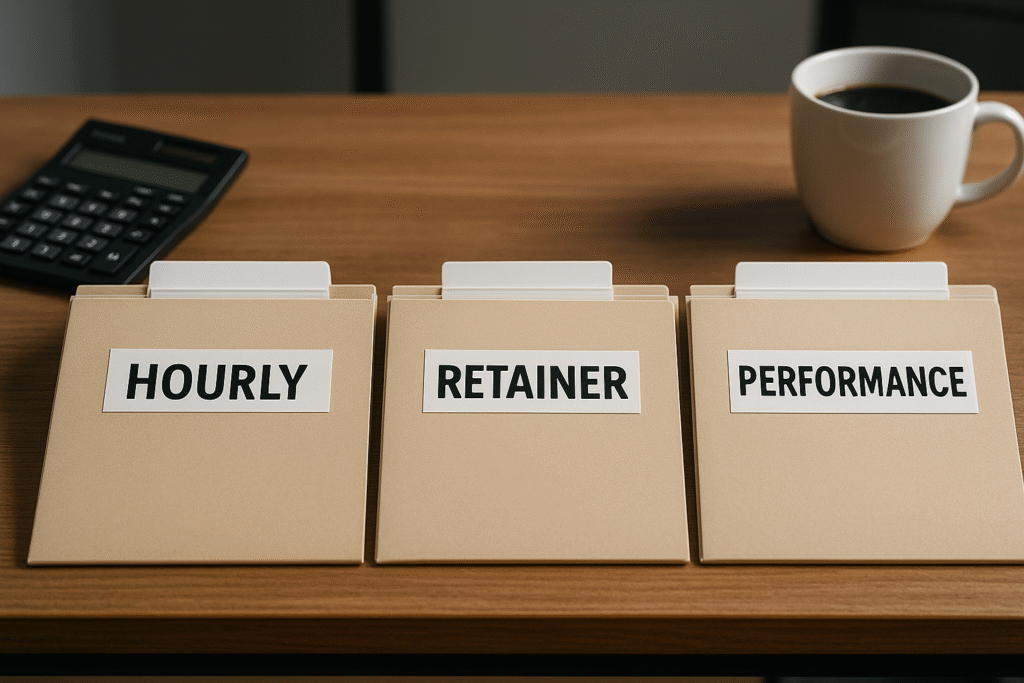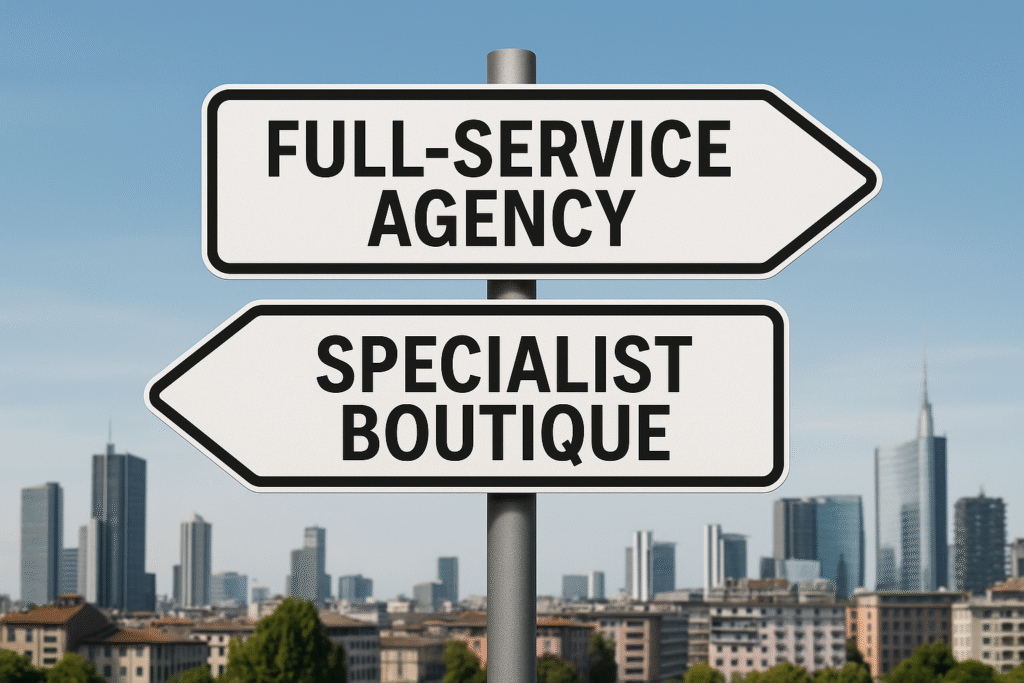Why agency pricing models matter to your bottom line
Selecting the right agency pricing models determines how much control you keep, how fast you scale, and how predictable your cash flow stays. Choose wisely and you’ll amplify ROI; choose poorly and you’ll bleed budget before results appear.
Agency Pricing Models Explained
Agency pricing models come in three dominant flavors—hourly, retainer, and performance-based—each designed to balance risk and reward differently for client and agency.
Hourly Billing
- How it works: Pay only for tracked hours.
- Good for: Short projects, “a-la-carte” tasks, or auditing an existing strategy.
- Watch-outs: Scope creep; no performance incentive.
- Internal link: [/blog/agency-onboarding-checklist]
Retainer (Monthly Flat Fee)
- How it works: Buy a block of services each month.
- Good for: Ongoing campaigns, predictable spend, long-term strategy.
- Watch-outs: Unused hours; complacency risk.
- Internal link: [/blog/full-service-vs-boutique-agency]
Performance-Based
- How it works: Pay a percentage of the revenue, leads, or KPI uplift generated.
- Good for: High-growth brands comfortable sharing data.
- Watch-outs: Attribution disputes; higher base rates.
- Internal link: [/blog/7-kpis-a-good-agency-should-report]
Comparing agency pricing models at a glance
| Model | Up-Front Cost | Incentive Alignment | Flexibility | Typical KPI Window |
| Hourly | Low | None | High | Immediate |
| Retainer | Medium | Moderate | Medium | 30–90 days |
| Performance | Variable | High | Low–Medium | 90–180 days |
(Internal link: [/resources/agency-pricing-calculator])
Hidden Costs to Watch For
- Tool Licenses – Ask who pays for premium SaaS subscriptions.
- Change Orders – Hourly add-ons can inflate a retainer.
- Attribution Software – Required for reliable performance-based payouts.
- Ramp-Up Time – Initial research hours may not show direct ROI.
- Termination Clauses – Some retainers carry 60-day notice periods.
How to Pick the Right Model for Your Business
- Match Risk Tolerance: If cash is tight, performance deals may align best.
- Assess Internal Bandwidth: Few in-house marketers? Retainer brings stability.
- Define Time Horizon: Need quick fixes? Hourly; building brand moat? Retainer.
- Quantify KPIs Up Front: The clearer the metric, the easier performance pay works.
Negotiation Tips
- Cap Hours in Retainers—and roll over 10 % unused time.
- Hybrid Deals—mix a small base retainer with a performance bonus.
- Audit Clauses—include the right to third-party review of time logs.
- Escalator Clauses—tie fee increases to agreed KPI milestones.
Frequently Asked Questions
Are performance-based deals risk-free?
No. You may pay a premium percentage, and disputed attribution can stall campaigns.
Can I switch agency pricing models mid-contract?
Yes—if your agreement has a conversion clause. Negotiate one at signing.
What’s the industry average hourly rate?
U.S. digital agencies typically range $120 – $200 per billable hour in 2025.
Conclusion
The best agency pricing models align incentives, budget predictability, and growth goals. Review the pros and cons above, run the hidden-cost checklist, and negotiate a structure that propels—not constrains—your marketing momentum.




